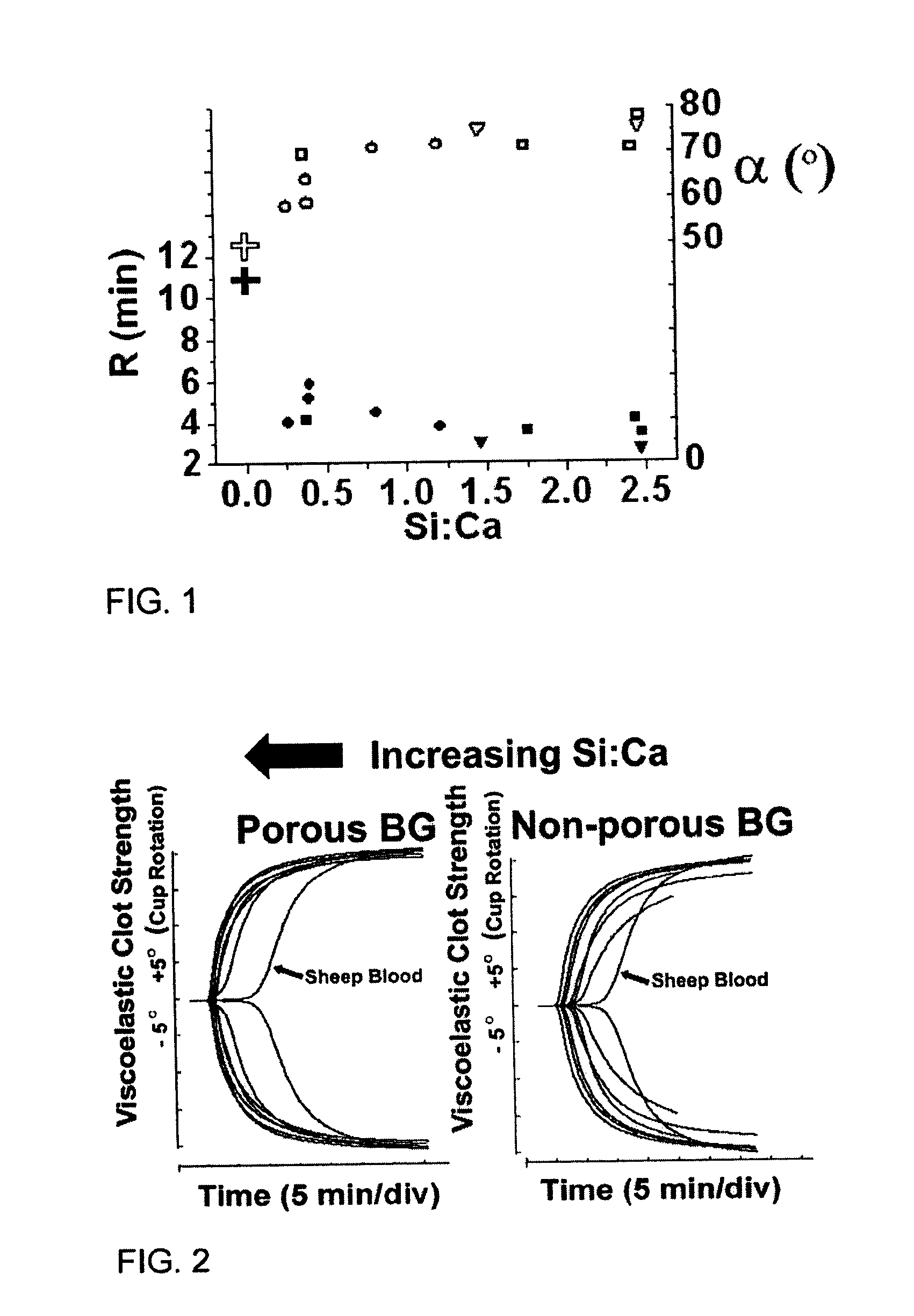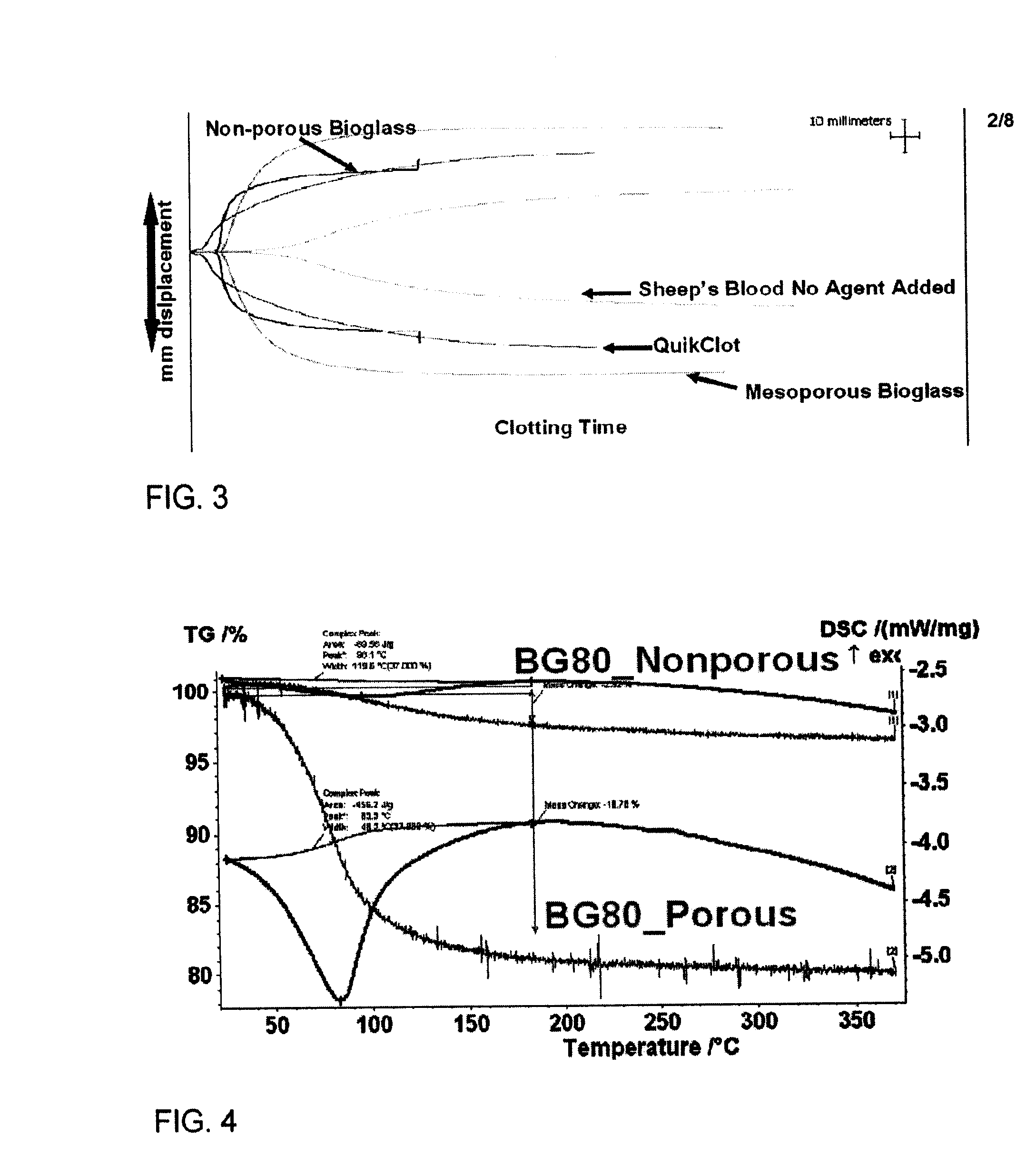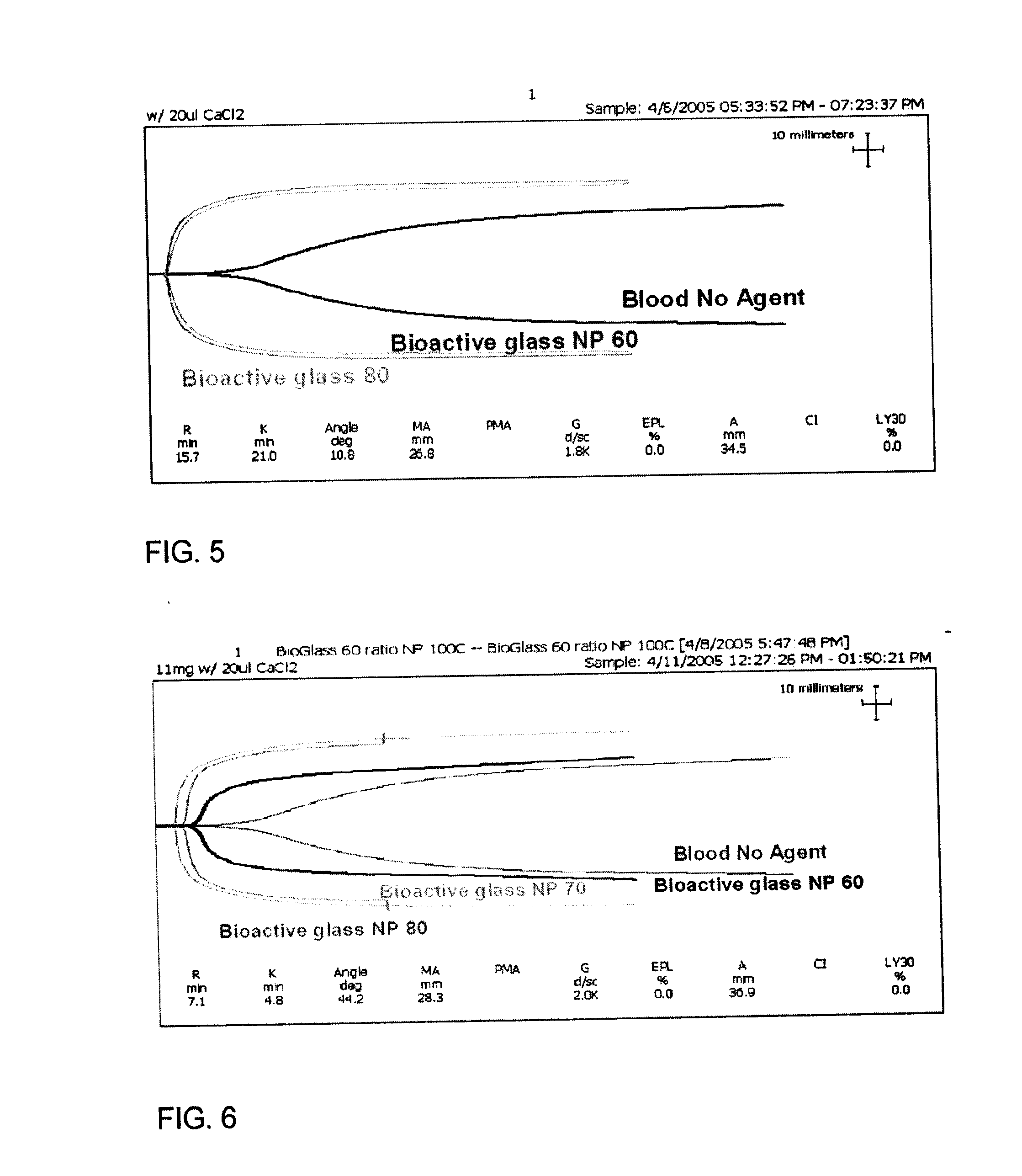Oxides for Wound Healing and Body Repair
a wound healing and body technology, applied in the field of oxides for wound healing and body repair, can solve the problems of affecting the deposition rate of secondary bone and tissue growth, reducing the failure possibility of prostheses, and excessive heat generated locally at the injured si
- Summary
- Abstract
- Description
- Claims
- Application Information
AI Technical Summary
Benefits of technology
Problems solved by technology
Method used
Image
Examples
example 1
Hemostatic Activity of Bioactive Glass
[0081] The time until clot detection, R, decreases for increasing Si:Ca ratios in BG (FIGS. 1, 2). R is reduced by a factor of 2 when the Si:Ca ratio is doubled over the range studied.
[0082] BG can perform the dual role of providing surface area for thrombosis and supplying Ca2+ ions; hence there will be an optimum ratio of SiO2 to Ca2+ ions, which are co-factors throughout the clotting cascade, for the fastest hemostatic response. The BG-induced coagulation rate, α, increases with increasing Si:Ca ratios and maximizes for the same Si:Ca ratio as for the minimum R time (Si:Ca(Rminαmax) ˜2.5). All blood clots induced by BGs resulted in stronger than natural clots (MABG≧62 and MANatural=58 dyn / cm2.
example 2
Formulation of Mesoporous Bioactive Glass
[0083] The unique formulation of high surface area mesoporous bioactive glass that we have prepared has the ability to rapidly induce a blood clot when exposed to blood. In fact, the formulation we have prepared has a faster clotting time and results in a stronger clot than QuikClot™, the leading inorganic hemostatic agent currently available (see FIG. 3). Both the porous and non-porous formulations of bioactive glass possess this ability to rapidly promote blood coagulation. Because the porous and non-porous formulations of bioactive glass can be hydrated to different degrees, and consequently will deliver different amounts of heat upon hydration during medical application to a wound site, we can further tailor the rate of blood coagulation. Combinations of porous and non-porous bioactive glass can be formulated to the desired specifications of hydration and delivery of heat (see FIG. 4).
example 3
Mesoporous Bioactive Glass with Varying Ratios of SiO2:CaO
[0084] This example shows that one make the bioactive glass with varying ratios of SiO2:CaO. At higher SiO2:CaO ratios (more silica), the material tends to clot blood faster. This is illustrated in both FIGS. 5 and 6. As the amount of SiO2 relative to the amount of CaO is reduced, the kinetics of clot formation are much slower. The difference in clotting kinetics between two bioactive glass samples with different SiO2:CaO is more pronounced with the non-porous samples. The mesoporous bioactive glass is a faster clotting agent than the non-porous samples, but the difference between samples is greater within the non-porous samples.
[0085] This example also shows that one can use combinations of porous and non-porous bioactive glass, as well as composites with multiple bioactive glasses of different SiO2:CaO ratios, to achieve any desired hydration capacity and heating response when in contact with blood (see FIGS. 7 and 8).
PUM
 Login to View More
Login to View More Abstract
Description
Claims
Application Information
 Login to View More
Login to View More - R&D
- Intellectual Property
- Life Sciences
- Materials
- Tech Scout
- Unparalleled Data Quality
- Higher Quality Content
- 60% Fewer Hallucinations
Browse by: Latest US Patents, China's latest patents, Technical Efficacy Thesaurus, Application Domain, Technology Topic, Popular Technical Reports.
© 2025 PatSnap. All rights reserved.Legal|Privacy policy|Modern Slavery Act Transparency Statement|Sitemap|About US| Contact US: help@patsnap.com



